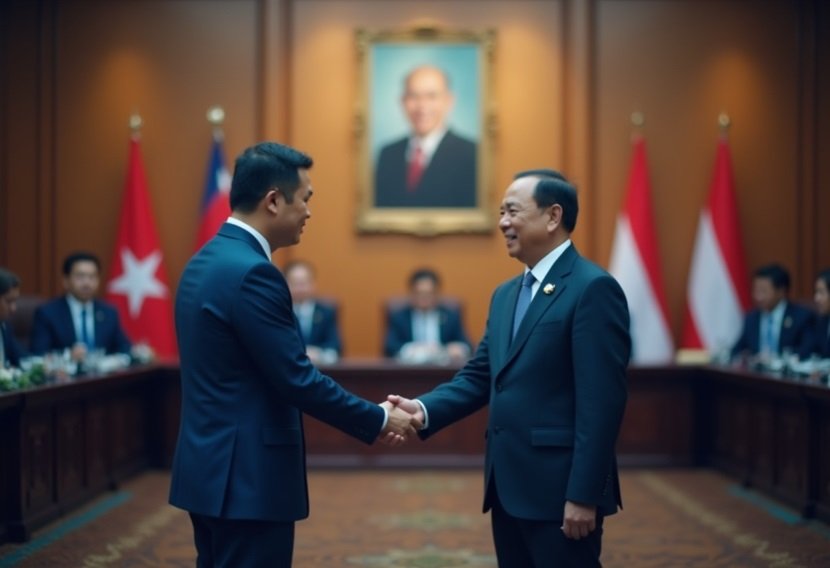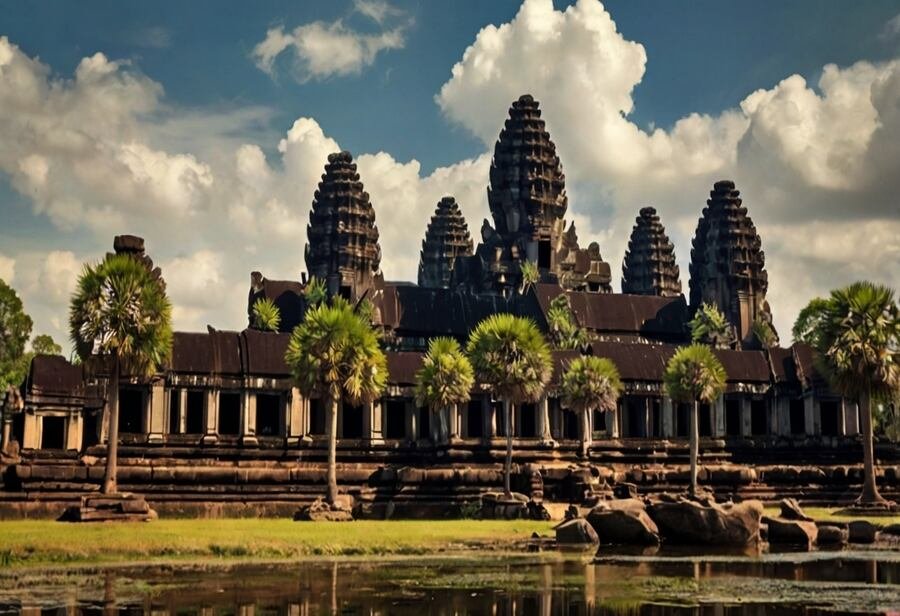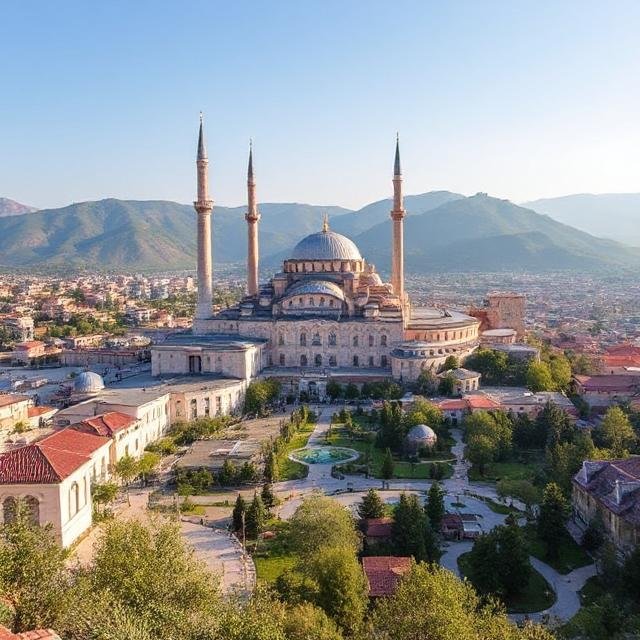Asia Travel Pulse
Thailand and Cambodia Set to Discuss Border Management In Malaysia: Will the Outcome Could Impact Tourism in Southeast Asia?

Monday, August 4, 2025
As Thailand and Cambodia prepare for crucial talks on border management in Malaysia, there are more than just diplomatic implications to consider. With both nations heavily reliant on tourism for economic growth, the outcome of these negotiations could have a profound impact on the region’s travel industry. The planned four-day talks, taking place in Malaysia, come after a ceasefire agreement was reached to end deadly clashes in the disputed border region. The discussions will focus on ensuring the ceasefire holds, establishing a monitoring team, and finding long-term solutions to manage the region peacefully.
As the two nations open talks, the world will be watching closely, not only for political and security developments but also for how the future of tourism in Thailand and Cambodia could be shaped by the outcome.
A Fragile Peace and Its Effect on Regional Travel
While the ceasefire signed after the July 24 clashes between Thailand and Cambodia has held, the path toward lasting peace remains uncertain. This fragile peace could have positive repercussions for tourism in both countries, encouraging international visitors to return. Thailand, known for its vibrant cities, stunning beaches, and world-class cultural experiences, and Cambodia, famed for the temples of Angkor and its rich history, both attract millions of tourists each year.
But the recent military clashes and continued tensions have cast a shadow over the region’s tourism sector. As tourists shy away from regions marked by conflict, a resumption of hostilities could deter travelers from visiting not only the border areas but also other parts of both countries. For Cambodia, a tourism industry that has seen rapid growth, especially in Siem Reap and Phnom Penh, could see a significant dip in visitor numbers if these tensions escalate. Similarly, Thailand, which relies heavily on tourism from international visitors, particularly in its cultural and natural attractions, could also face disruptions.
If the border situation were to stabilize, it would provide an opportunity for tourism to flourish in both countries. Tourists are likely to return to explore Cambodia’s iconic temples, particularly Angkor Wat, and Thailand’s pristine beaches and ancient landmarks. A peaceful resolution could reinforce the region’s reputation as a safe and exciting destination for travelers from around the world.
ASEAN’s Role and Potential Benefits for Travel in Southeast Asia
ASEAN, the regional group that has long sought to promote peace and cooperation in Southeast Asia, has played a key role in mediating the ceasefire agreement. The organization’s involvement is crucial in ensuring that the peace process holds, and the outcome could have far-reaching implications for regional tourism.
For Southeast Asia, peace between Thailand and Cambodia would signal stability and cooperation, which are key drivers for attracting international travelers. ASEAN member states have long emphasized the importance of peaceful borders to enhance trade, investment, and tourism. A successful resolution of this border dispute would strengthen Southeast Asia’s reputation as a thriving travel hub.
Impact on Thailand and Cambodia’s Tourism Markets
Both Thailand and Cambodia rely heavily on tourism, which makes the stability of their borders crucial. With a combined total of nearly 40 million international tourists visiting both countries annually, any instability can cause a significant ripple effect throughout the tourism industry. For Thailand, tourism represents around 20% of its GDP, and it has worked hard to build a reputation as one of the most popular tourist destinations in the world. A conflict along its border could directly affect visitor numbers, especially to cities such as Bangkok and Chiang Mai, which rely on international flights that could be redirected due to political unrest.
Cambodia, with its rapidly growing tourism sector, particularly around cultural sites like Angkor Wat, is also at risk. In recent years, Cambodia has been making strides in becoming a key destination for travelers seeking cultural and adventure tourism. The tourism sector contributes substantially to Cambodia’s economy, and the recent increase in international arrivals has bolstered the country’s infrastructure and services. However, if tensions escalate, Cambodia could lose ground in this competitive market.
A lasting peace agreement, however, would ensure that tourists feel comfortable visiting these two countries without the fear of political instability. The benefits would be immediate, boosting international arrivals and further solidifying their status as safe, desirable travel destinations.
Strategic Considerations for Tourism Development in Both Countries
Looking beyond the border negotiations, Thailand and Cambodia must also consider how they can foster further collaboration to enhance tourism in the region. For Thailand, which already has a robust tourism infrastructure, working closely with Cambodia to promote cross-border tourism could help elevate both nations as key regional destinations. Multi-destination itineraries that combine Thailand’s beaches with Cambodia’s cultural heritage could provide significant opportunities to boost the tourism market in both countries.
For Cambodia, the key to long-term tourism success lies in preserving its cultural heritage while modernizing its infrastructure. This includes improving roads, expanding airport capacities, and ensuring that tourism operators are well-equipped to handle growing international demand. Cooperation with Thailand on these fronts could allow Cambodia to expand its reach as a destination for both cultural and eco-tourism, while also supporting sustainable travel practices.
Tourism’s Role in Promoting Peace and Diplomacy
Tourism has long been seen as a tool for fostering peace, understanding, and cultural exchange. By working together to resolve their border dispute, Thailand and Cambodia can set a positive example for the rest of Southeast Asia. Shared cultural heritage, such as that embodied in the Angkor temples and Thailand’s ancient cities, offers a unique opportunity for both countries to collaborate, attract visitors, and show the world the power of diplomacy through tourism.
The upcoming talks in Malaysia are not just about border management—they are a pivotal moment in determining the future trajectory of tourism in Southeast Asia. A successful resolution could unlock immense potential for the tourism industries of both Thailand and Cambodia, opening doors for new markets and visitors from across the globe. Conversely, unresolved tensions could have long-lasting effects on the region’s travel sector, stalling its growth and hindering the development of new tourist destinations.
Conclusion: A Turning Point for Southeast Asia’s Tourism
As Thailand and Cambodia engage in talks to resolve their border issues, the region’s tourism industry stands at a critical crossroads. With millions of tourists flocking to the Southeast Asian region each year, the ability to maintain peace will have a direct impact on both countries’ travel economies. The upcoming discussions offer hope for a more stable and prosperous future, not only for Thailand and Cambodia but also for Southeast Asia as a whole. The resolution of these border disputes could pave the way for a new era of cooperation, tourism growth, and cultural exchange in the heart of one of the world’s most dynamic travel destinations.
Asia Travel Pulse
Cambodia Continues to Offer a Safe Travel Experience for Visitors After Ceasefire Agreement Restores Peace and Security : You Need to Know

Monday, August 4, 2025
Cambodia continues to provide safe passage for Cambodian nationals, whilst the recent Cambodia Thailand ceasefire has accompanied peace and stability throughout the region, creating an ideal environment conducive to travel. The deal also answers previous collapse, especially where tourist sites close to the Preah Vihear Temple is enough open and secure all major tourism in the country. In Cambodia, the Cambodian Government working with local and national authorities who are closely monitoring, not only for safety of their locals communities but also for international travelers. This timely and proactive approach reinforces the fact that Cambodia is still as friendly a destination as ever, and that visitors can explore its cultural treasures and natural wonders with confidence.
On Friday, Cambodia’s Ministry of Tourism issued a statement aimed at assuring both local and international communities that the country remains a “safe and welcoming destination” for travelers. This reassurance comes after the announcement of a ceasefire agreement between Cambodia and Thailand, which officially went into effect, restoring peace and stability across the nation.
The ceasefire brings a sense of calm to areas previously affected by tensions, such as those surrounding the iconic Preah Vihear Temple, a UNESCO World Heritage site located near the Cambodian-Thai border. With this agreement now in place, the Ministry confirmed that these areas, along with all of Cambodia’s popular tourist attractions, are secure and fully operational for visitors. The Cambodian government is taking every step to ensure that the tourism industry remains unaffected by geopolitical tensions in neighboring regions.
Cambodia has long been a beloved destination for travelers seeking a rich cultural experience, vibrant landscapes, and world-renowned hospitality. In recent years, the Southeast Asian nation has seen a steady rise in international tourism, with tourists flocking to iconic landmarks like Angkor Wat, Phnom Penh, and the country’s picturesque beaches. Given the recent concerns, the Ministry felt it was essential to communicate that all major tourism sites remain safe and open to travelers.
The Ministry’s announcement emphasizes the comprehensive measures the Cambodian government has taken to safeguard both tourists and local communities. National and local authorities are closely monitoring the situation, ensuring that security standards are maintained across the country. The authorities’ coordinated efforts are designed to offer tourists peace of mind and confidence while traveling within Cambodia, especially given the regional challenges.
The Cambodian government has always been committed to values of peace, respect for cultural diversity, security, and hospitality, all of which form the foundation of the nation’s tourism industry. The Ministry’s message strongly encourages travelers to visit Cambodia and explore the country’s rich heritage, confident in the safety of their travels. Visitors are invited to experience Cambodia’s historical landmarks, beautiful landscapes, and warm hospitality without concern, as the country’s commitment to safety is unwavering.
Tourism safety remains a top priority for the Cambodian government, and the Ministry is dedicated to ensuring that visitors feel secure throughout their stay. As the country continues to grow as a prime tourism destination, maintaining the safety and well-being of tourists is central to its success. The government’s proactive approach and clear communication are crucial in maintaining Cambodia’s standing as a stable and attractive location for international travelers.
In 2025, Cambodia’s tourism sector is showing remarkable growth. Over the first six months of the year, the country welcomed more than 3.36 million international visitors, representing a 6.2% increase over the same period last year. This growth follows a challenging period due to the global pandemic and is a promising sign of recovery for Cambodia’s tourism industry. The Ministry has worked diligently to revitalize the sector, and the positive results reflect the country’s efforts to rebuild and promote its tourism offerings.
The Ministry of Tourism’s proactive actions in response to the ceasefire have been praised for helping to ensure the resilience of the tourism industry. The government’s transparent communication with international audiences has been essential in rebuilding confidence in Cambodia as a prime tourist destination. The Ministry’s quick response and ability to address concerns have played a pivotal role in maintaining the country’s reputation as a safe and attractive travel spot.
In addition to addressing security concerns, the Ministry of Tourism is actively promoting Cambodia’s diverse offerings to attract visitors year-round. The ongoing “Green Season” campaign is one such initiative, designed to showcase the country’s natural beauty during the rainy season. This campaign highlights the lush greenery, vibrant wildlife, and peaceful atmosphere that Cambodia has to offer during this quieter time of the year. The Ministry is encouraging travelers to visit Cambodia during the Green Season to experience the country’s unique charm and cultural richness.
The Green Season campaign also serves a broader goal of attracting visitors throughout the entire year, ensuring that Cambodia’s tourism industry remains strong regardless of seasonal trends. By extending its tourism calendar beyond the dry season, Cambodia is positioning itself as an attractive destination for all seasons. This strategic move aims to boost travel to lesser-known areas of the country, helping to support more sustainable and equitable tourism growth across Cambodia.
The government is also focused on enhancing tourism infrastructure to ensure that visitors enjoy a seamless and enriching travel experience. Sustainable tourism practices are being prioritized, ensuring that the growth of the industry does not come at the cost of Cambodia’s natural environment or cultural heritage. This long-term approach to tourism aims to balance development with the preservation of the country’s unique identity.
Cambodia continues to offer a safe travel experience for visitors following the recent ceasefire agreement with Thailand, which has restored peace and stability. The government’s proactive measures ensure that all major tourist sites are secure, allowing tourists to explore the country with confidence.
In short, Cambodia is still safe and very open to the arrival of international tourists. Similar to the context mentioned above, recent geopolitical tensions are proving less detrimental vis-a-vis the government’s timeliness and efforts in promoting sustainable tourism. With its diverse, rich history and landscapes of unsurpassed natural beauty — coupled with a hospitality ethos that remains steadfast — Cambodia is set to remain at the forefront in this growing travel region. The government will ensure that its commitment to peace, security and the welfare of visitors underpins Brunei’s transformation into flourishing global hub for travel.
Asia Travel Pulse
Azerbaijan Strengthens New Tourism Ties with Central Asia, Attracting More Visitors from Kazakhstan and Uzbekistan

Sunday, August 3, 2025
Azerbaijan is stepping up its campaign to improve tourism by focusing on higher tourist arrivals from Central Asia, especially Kazakhstan and Uzbekistan. In connection with this, the Azerbaijan Tourism Board recently conducted a familiarization trip for the two countries’ tourism representatives to promote Azerbaijan’s summer destinations. This action is part of the country’s overall plan to reinforce its role as a main destination in the region, highlighting the variety of experiences Azerbaijan has to offer visitors from the neighboring Central Asian states.
Familiarization Trip Highlights
The familiarization trip took participants on an exploration of Azerbaijan’s rich cultural and natural offerings, starting in Baku, the vibrant capital. Travelers visited the city’s bustling streets, which are known for their blend of modernity and tradition. The itinerary then took them to the scenic regions of Shamakhi and Basqal, known for their lush landscapes and historical sites. Along the Caspian Sea coastline, participants explored a variety of beach resorts and hotels, emphasizing the country’s appeal as a summer destination.
One of the standout moments of the trip was a visit to Dream Fest, a popular music festival held at the Sea Breeze Resort. Dream Fest has become a significant cultural event in Azerbaijan, attracting both local and regional visitors. Its beachside setting provides an engaging cultural experience, further highlighting Azerbaijan’s appeal as a tourist destination with a dynamic and diverse entertainment scene.
Business and Tourism Partnerships
The trip also included a business-to-business networking session, bringing together nearly 60 Azerbaijani destination management companies and hotels. This session was designed to foster collaboration and open doors for future tourism development between Azerbaijan and Central Asia. By strengthening these regional partnerships, the tourism industry in Azerbaijan aims to build long-term relationships with Kazakhstan and Uzbekistan, ensuring sustainable growth in cross-border travel.
Growing Tourism Numbers
Recent data from the Azerbaijan Tourism Board reveals promising growth in tourism from Central Asia. In the first half of 2025, over 68,000 tourists from Kazakhstan and Uzbekistan visited Azerbaijan, marking a 15% increase compared to the same period in 2024. This growth is attributed to several key factors, including the visa-free travel policy and the increasing availability of direct flights to Baku.
Tourists from Kazakhstan and Uzbekistan can now fly directly to Azerbaijan’s capital from multiple cities. Airlines such as AZAL, FlyArystan, Air Astana, Uzbekistan Airways, and Centrum Air offer non-stop flights from four cities in Kazakhstan and two in Uzbekistan, cutting down travel time to just around three hours. This ease of access has been a major factor in boosting tourist numbers, making Azerbaijan an increasingly convenient destination for travelers from Central Asia.
Strengthening Regional Ties
The rise in tourism is also a reflection of the deepening business and cultural ties between Azerbaijan and Central Asia. The countries share a history of cooperation, and Azerbaijan has become a key partner in the region. As part of efforts to further improve tourism connectivity, a proposal was made earlier this year for a high-speed passenger ferry service between Aktau in Kazakhstan and Baku. This potential new route aims to enhance the flow of tourists and create a more seamless travel experience across the Caspian Sea.
Long-Term Strategies for Tourism Growth
Azerbaijan has been actively working on long-term strategies to enhance its tourism sector. In 2018, the country launched the “Take Another Look!” campaign, which included a refreshed international tourism logo to help reposition Azerbaijan as a must-visit destination globally. Along with this, the Azerbaijan Tourism Board opened six overseas offices in key markets, including Russia, the UAE, Saudi Arabia, India, China, and Germany. These international efforts have significantly contributed to Azerbaijan’s visibility on the global tourism map.
The country’s tourism efforts began paying off in 2019 when Azerbaijan saw a record-breaking 3.2 million international visitors, a rise of 11% from the previous year. However, the global COVID-19 pandemic severely impacted tourism in 2020, with a sharp decline in both the number of visitors and tourism revenue due to travel restrictions and border closures. Despite the setbacks, Azerbaijan’s tourism sector is recovering, and the focus remains on fostering regional and international tourism.
Azerbaijan’s Bid for Tourism Growth by Tourist Arrivals from Central Asia
Azerbaijan’s consistent efforts to woo increased travel from Kazakhstan and Uzbekistan are paying off. Increased air links, a visa-free regime, and cultural popularity are making the country the premier tourist hub in the region. The collaborative endeavors, including familiarization tours and business networking, are assisting in the establishment of foundations for increased tourism in the future. With Azerbaijan continuing to promote its natural attractions, rich culture, and contemporary amenities, the nation stands to gain further growth in tourists, positioning itself as a key driver in Central Asian tourism.
Asia Travel Pulse
Laos-China Railway: A Revolutionary High-Speed Rail Link Transforming Travel and Tourism in Southeast Asia

Sunday, August 3, 2025
The Laos-China Railway (LCR), a significant project worth £4.6 billion, has ended years of travel difficulties between Laos and China. This rail link, which opened in 2021, has greatly improved connectivity between the two countries and changed the transportation scene in Laos, a nation previously known for its difficult and slow overland travel.
Spanning 414 kilometers from the Boten border near China to the capital city of Vientiane, the LCR is more than just a transportation project; it is a driver of economic growth, regional cooperation, and tourism development. This high-speed rail line has changed how both locals and tourists travel through Laos, making the once challenging journey into a smooth, comfortable, and fast experience.
A Transformative Project for Laos
Before the construction of the Laos-China Railway, Laos had been plagued by inadequate infrastructure, with limited road networks and a lack of modern transport options. Travel within the country, especially to remote regions, was often arduous, characterized by long journeys on poorly maintained roads in overcrowded, uncomfortable minibuses.
For years, the people of Laos had endured this transportation struggle, which hindered not only the movement of goods but also regional tourism and economic development. However, with the introduction of the LCR, the country has entered a new era of travel that promises to reshape its future.
The LCR, which was built as part of China’s Belt and Road Initiative, has created a fast and efficient rail link connecting Kunming, China, to Vientiane, Laos, cutting travel times significantly. What used to take days by road is now accomplished in just 10 hours by train. This reduction in travel time is not just a matter of convenience; it is a transformative shift that is expected to bring long-term benefits to both countries.
High-Speed Rail Brings Comfort and Efficiency
The Laos-China Railway is the first high-speed rail network in Laos, representing a leap forward in the country’s infrastructure. Unlike the grueling overland travel of the past, the LCR offers a modern, air-conditioned, and efficient mode of transport. Passengers can now enjoy a smooth, fast ride through some of Laos’ most scenic regions, including lush forests, mountains, and rural landscapes. This rail link has dramatically improved the travel experience, making it much more pleasant for both locals and visitors alike.
For tourists, the new rail link offers a much more convenient way to explore Laos, providing easy access to popular destinations such as Luang Prabang, Vang Vieng, and Vientiane. These cultural hubs and adventure hotspots are now within a short distance of each other, making it possible to experience more of Laos’ rich history and stunning natural beauty in a fraction of the time.
Economic and Tourism Impact
The Laos-China Railway has not only improved transportation but has also had a profound impact on the country’s tourism and economy. The rail link facilitates travel between China and Laos, increasing the flow of tourists and trade between the two nations. This new accessibility is expected to attract more Chinese tourists to Laos, a market that was previously underserved due to travel difficulties.
The railway also supports local tourism by connecting cultural destinations, adventure locations, and urban centers. Luang Prabang, for example, is a UNESCO World Heritage Site known for its stunning temples, monasteries, and traditional architecture, while Vang Vieng is a favorite among adventure seekers, with activities like tubing, hiking, and rock climbing. These sites are now easier to access, making it more likely that tourists will visit multiple destinations within Laos during a single trip.
Additionally, the LCR plays a key role in boosting economic development. By improving regional connectivity, the railway is helping to integrate Laos more fully into the regional economy. The enhanced infrastructure has opened up new opportunities for investment, business, and trade, particularly as Laos becomes a more important player in China’s Belt and Road Initiative.
Key Stops Along the Laos-China Railway
The Laos-China Railway serves several key stops along its 414-kilometer route, each offering unique experiences for travelers. Some of the most notable stops include
- Boten—Located near the Chinese border, Boten is a crucial entry point for both trade and tourism. The railway’s connection to Boten has made it much easier for travelers to access northern Laos and connect with other regional destinations.
- Muang Xai – A small town in the northern part of Laos, Muang Xai is an essential stop for travelers heading to the country’s rural regions. It offers an authentic look at Lao village life.
- Luang Prabang—One of the most famous cultural destinations in Southeast Asia, Luang Prabang is now more accessible than ever thanks to the LCR. Its UNESCO World Heritage status makes it a must-visit for anyone exploring the region.
- Vang Vieng—Known for its stunning natural beauty and adventure tourism, Vang Vieng is a top destination for those seeking outdoor thrills. The LCR makes it easier for visitors to reach this popular location.
- Vientiane—The capital city of Laos, Vientiane is the final destination on the railway line. It is a city rich in history, culture, and modern amenities, making it a vibrant and dynamic urban center for travelers.
Connecting Laos to China’s Belt and Road Initiative
The Laos-China Railway is also a critical part of China’s broader Belt and Road Initiative, which aims to enhance regional connectivity and foster economic development through infrastructure projects. By connecting Laos more directly with China, the LCR has opened up new opportunities for trade, tourism, and investment.
As a result, the railway has become a key piece in strengthening bilateral relations between Laos and China, fostering greater economic integration and promoting cultural exchanges. This improved connectivity has the potential to create a ripple effect throughout the region, encouraging more cross-border trade and helping to elevate Laos’ role in the global economy.
A New Chapter for Laos
The Laos-China Railway is a major development for the country. With the launch of this modern high-speed rail line, Laos has made a significant move to address its transportation challenges. The LCR not only improves travel for locals and tourists but also helps boost Laos’ economic prospects and strengthens its role in the regional and global economy.
By linking China and Laos through quick and efficient rail travel, the LCR has created new opportunities for tourism, trade, and regional cooperation. This development paves the way for a better future for the people of Laos.
-

 Brand Stories2 weeks ago
Brand Stories2 weeks agoBloom Hotels: A Modern Vision of Hospitality Redefining Travel
-

 Brand Stories1 week ago
Brand Stories1 week agoCheQin.ai sets a new standard for hotel booking with its AI capabilities: empowering travellers to bargain, choose the best, and book with clarity.
-

 Destinations & Things To Do2 weeks ago
Destinations & Things To Do2 weeks agoUntouched Destinations: Stunning Hidden Gems You Must Visit
-

 Destinations & Things To Do1 week ago
Destinations & Things To Do1 week agoThis Hidden Beach in India Glows at Night-But Only in One Secret Season
-

 AI in Travel2 weeks ago
AI in Travel2 weeks agoAI Travel Revolution: Must-Have Guide to the Best Experience
-

 Brand Stories1 month ago
Brand Stories1 month agoVoice AI Startup ElevenLabs Plans to Add Hubs Around the World
-

 Brand Stories3 weeks ago
Brand Stories3 weeks agoHow Elon Musk’s rogue Grok chatbot became a cautionary AI tale
-

 Asia Travel Pulse1 month ago
Asia Travel Pulse1 month agoLooking For Adventure In Asia? Here Are 7 Epic Destinations You Need To Experience At Least Once – Zee News
-

 AI in Travel1 month ago
AI in Travel1 month ago‘Will AI take my job?’ A trip to a Beijing fortune-telling bar to see what lies ahead | China
-

 Brand Stories2 weeks ago
Brand Stories2 weeks agoContactless Hospitality: Why Remote Management Technology Is Key to Seamless Guest Experiences













You must be logged in to post a comment Login